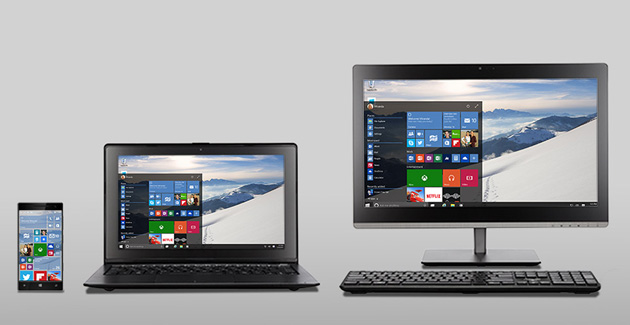And just like that, Microsoft Windows 10 makes the PC cool again
Seems like an eternity since we last talked about the future of PCs, which to many seemed grim at best, up until Microsoft unveiled its brand new plans for a future that seems prosperous, by the day, not only for Microsoft, but for an entire industry.

As we re-read a particular article, which we posted last September, many of what was written back then, is now particularly relevant, with the exception of what we, and everyone else still assumed to be “Windows 9”.
We had predicted Apple and Microsoft would change the landscape of desktop computing.
Now, like clockwork, we see this has already happened, thanks to tech giants who strive to innovate and provide new ways for consumers to experience and integrate advanced and powerful technologies into their lives.
Let’s take a look at five technologies we will soon see as part of the next generation of desktop devices:
USB Type-C
The latest innovation in Universal Serial Bus technology, also labeled as “USB 3.1”, allows blazing fast speeds over wired connector, twice as fast as USB 3.0, with the added bonus of being able to handle bidirectional connections with other devices, bidirectional power supply, and video signal to external displays.
While USB 3.0 and perhaps 2.0 will still make an appearance in a number of devices, the versatility of USB Type-C is destined to catch on at such rate that every previous standard will burn off, like space wreckage, as consumers will discover the living nightmare of all obsolete technologies: backward-compatible adapters. Just like what DVI connectors did to the VGA port, and ironically, what HDMI did to DVI.
Better biometric hardware
Intel’s latest development in biometric tech, will allow users of Microsoft Windows 10, to unlock their devices using Intel’s RealSense 3D camera, whose advanced capabilities allow to recognize a face, and detect spatial depth, to be able to instantly know if a real person is standing before the camera, eliminating the possibility to trick a computer into allowing unauthorized access through the use of a fake image, such as a photograph.
Sensors that could save your life
Tablets and smartphones are already pioneering a number of sensors able to detect atmospheric pressure, humidity, temperature and spatial position. Future iterations of these sensors promise to be even more refined and complex, to the point of being able to measure carbon dioxide levels in the air, for instance,in a similar way as a smoke detector, but with the ability to automatically send out emergency alerts, or activate emergency systems like sprinklers, and unlocking and opening doors and windows in case of a fire hazard.
No more power cords
Wireless charging technology isn’t strictly bound to handheld devices like smartphones and tablets. The ability to charge up over the air, or by proximity, is already a reality, and as the development of over-the-air charging technology, as well as increasingly energy efficient hardware continues, we will soon see desktop PCs as a more integrated and natural part of our living space.
Amazing graphic performance
Microsoft Windows 10 already supports DirectX 12, a standard that will allow next-generation graphic hardware to deliver amazing performance, while using considerably less power.
Microsoft has demonstrated the capability of DirectX 12 at the unveiling of Microsoft Windows 10, with a demo executed on an Alienware PC, running both DirectX 11 and DirectX 12.
Microsoft Windows 10’s commercial release has been announced tentatively for this Summer, and will most likely coincide with the release of Windows 10 for phones. Owners of PCs running Windows 7 or Windows 8.1 will be able to upgrade for free, for the first year.